A13 Mk.I Cruiser Mark III British tank - SCRAPPED
I am still annoyed at the Musee du Mur de l'Atlantique Batterie Todt in France for scrapping the last remaining A13 Mk.I Cruiser Mk.III British tank in the world. They failed to take steps to look after it> When some of the body panels disintegrated with rust they called in a local scrap metal dealer to cut it up and take it away.
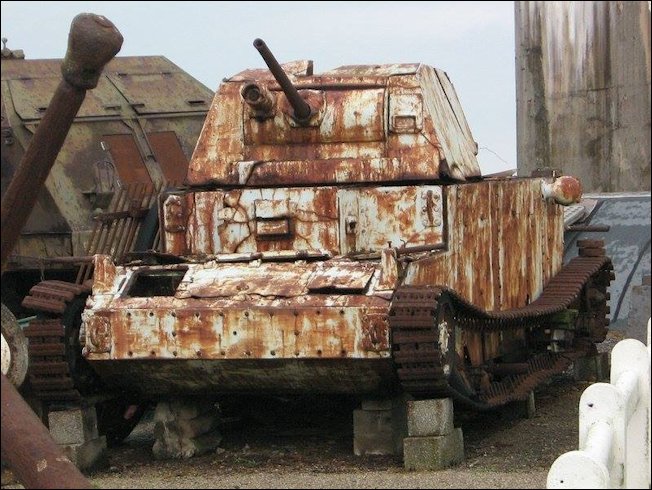
A13 Mk.I Cruiser Mark III British tank - Photo = Pierre-Oliver Buan
Location
It used to be kept as an exhibit, left out in the open exposed to the elements, at the Musee du Mur de l'Atlantique Batterie Todt, 62179 Audinghen, Cap Gris Nez, Northern France. Now it has gone. Normally I would not put up a page on a tank that has moved but I think this tank being the last example of its kind deserved its own page.
Specifications
It was powered by a Nuffield Liberty V12 Petrol gasoline engine that produced 340 hp. It had a top speed of 30 mph (48 km/h) and had an operational range of 90 miles (140 km). It was armed with a Vickers quick firing QF 2pdr (40mm) gun. A 0.303 (7.7 mm) Vickers machine-gun was fitted next to the main gun in the turret.
It required a Crew of four: commander, driver, gunner and loader. They were protected by armour that ranged from 6 mm - 14 mm thick. It weighed 15 tonnes. It was one of the first British tanks to have a Christie suspension system. Only 65 were produced.
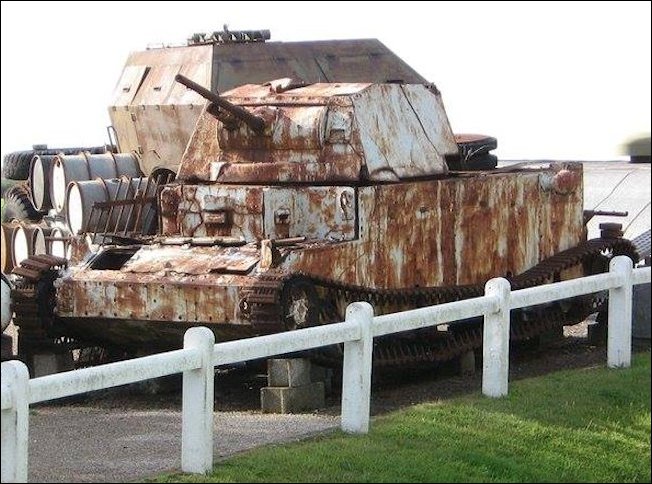
The A13 Mk.I Cruiser Mark III British tank was armed with a Vickers OF 2pdr main gun and a coaxial 0.303 (7.7 mm) Vickers machine-gun - Photo: Pierre-Oliver Buan
This tank's history
One of the museum staff members said when asked, 'The hull and turret had large cracks and that nothing was done for years. Sand and salt made the situation even worse, and the tank simply collapsed and feel in several metal bits. It took 2 weeks to remove all the metal fragments. Everything went to scrap.'
This A13 Mk.I Cruiser Mark III tank was found in the sand at Dunkirk. When found only the cupola was exposed as the tide went out. Forty years of salt water, sand and oxygen at low tide did the damage to the thin armour of this 1930's cruiser tank. It is a great shame that it has gone. A last reminder of the BEF in France 1940. Why did they not protect it when the tank was recovered? Even a coating of bitumen would have helped delay the rusting process for a while
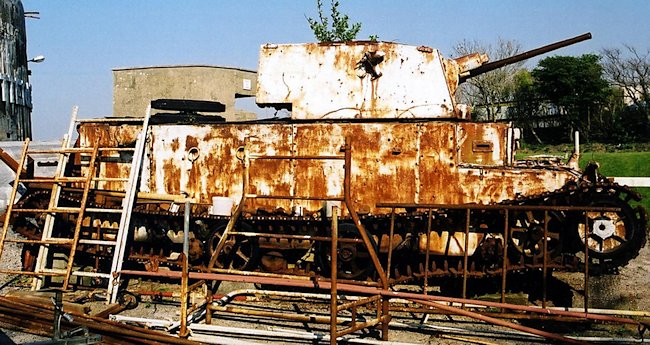
All the large road wheels of the Christie suspension system on this A13 Mk.I Cruiser Mark III British tank have gone - Photo: Carl Dennis
The American engineer, J Walter Christie, was the designer of a revolutionary new suspension system. It incorporated large road wheels and was capable of achieving high speeds both on flat roads and across undulating countryside.
The American army rejected Christie’s tank suspension design. The British Army on the other hand, liked what they saw. Two vehicles with Christie suspension were built and sent to Britain. They were used as the inspiration for the building of two prototype cruiser tanks at the British company Morris Commercial Limited.
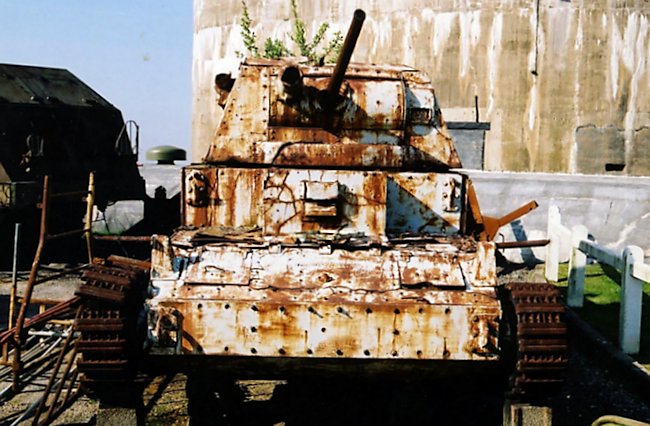
The driver of the A13 Mk.I Cruiser Mark III British tank sat in the middle of the tank - Photo = Carl Dennis
The first production models of the new cruiser tanks were given the designation A13, Cruiser Tank Mk III. (The A9 cruiser tank was the Mk.I and the A10 cruiser tank was the Mk.II). They entered service in 1939 the British Army. It was only called the A13 Mk.I, Cruiser Tank Mk III after the A13 MkII, Cruiser Tank Mk IV entered service.
This tank was a lot faster than the A10. The V-12 Nuffield Liberty petrol engine produced enough power to enable the tank to drive at 30 miles an hour on roads. This was nearly twice as fast as the A10 tank. It was now equipped to perform the function of a cavalry cruiser tank. It had the agility.
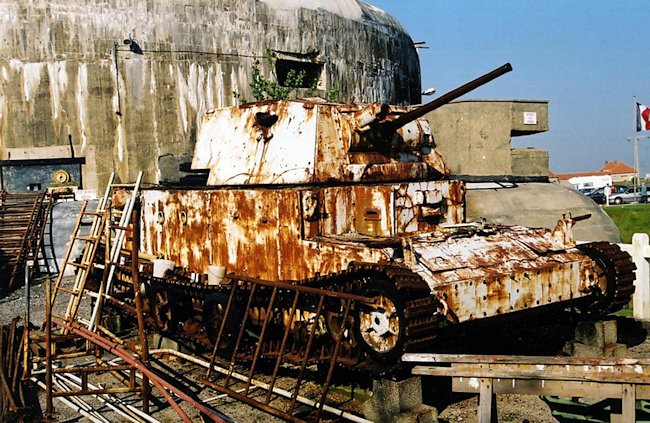
The Musee du Mur de l'Atlantique Batterie Todt kept this rare A13 Mk.I Cruiser Mark III British tank outside in the rain and snow without any protection to prevent the rust spreading - Photo = Carl Dennis
It was a lot lighter than the heavy Churchill and Matilda infantry tanks. It could scout out enemy positions and use its speed to get out of trouble. The problem came when the tank was hit by enemy 50mm or 75mm shells. Its armour was too thin and was easily penetrated.
The initial order was for 65 tanks. They saw service with the British Expeditionary Force BEF in northern France and Belgium in 1940. Many were left abandoned by their tank crews near Dunkirk and Calais. Later A10 Mk.I Cruiser Mk.III tanks were shipped to North Africa to join the British 7th Armoured Division fighting the Italian Army and later Rommel’s Afrika Corps.
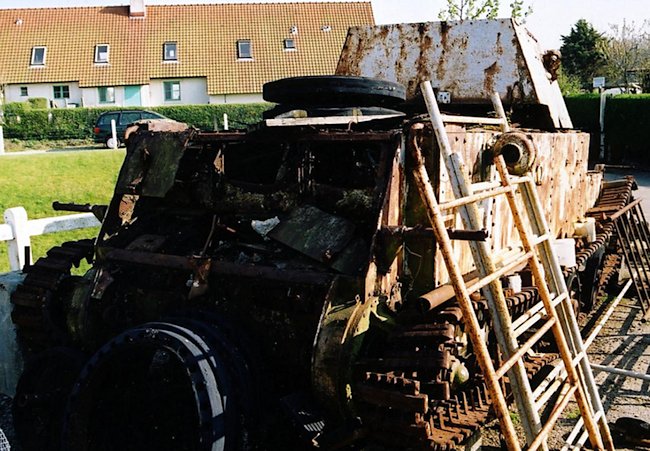
The rear armour plate has collapsed on this A13 Mk.I Cruiser Mark III British tank - Photo = Carl Dennis
Where can I find other preserved A13 Cruiser Tanks?
- The A13 Mk.II Cruiser Mk.IV at Bovington Tank Museum is the only surviving example
- Source - Pierre-Oliver Buan - http://the.shadock.free.fr/Surviving_Panzers.html
WW2 Tank books

